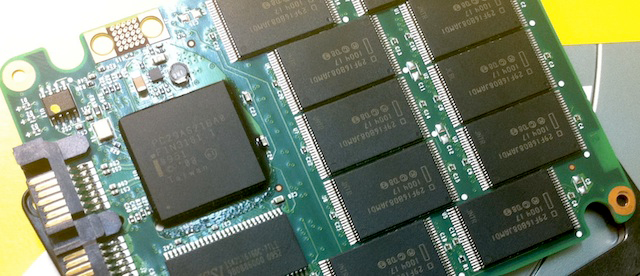You are here
Moving up to Solid State Drive speed
By Jean-Claude Elias - Jul 26,2018 - Last updated at Jul 26,2018
If you would like to give your computer a serious speed booster, the one single element that today is recommended to go to is a Solid State Drive (SSD) drive to store your data. Unless you happen to be lucky and already have one inside your new laptop, naturally.
Increasing the performance of a computer can be achieved in many a way. Moreover, depending on your specific needs and the programmes you use, what you may need could be increasing your Internet speed, or adding memory to the computer, etc. However, and in general, a faster drive is the best move forward you can make.
If you think that this is not what you need, think twice. How many times you have felt frustration at a slow machine restart, or even at a plain, fresh start, or when copying larges files, or when saving big Photoshop or Illustrator projects? For one and same given computer, moving up from a traditional hard disk drive (HDD) to an SSD is like moving from a bicycle to a motorcycle.
So why do not all computers — laptops and desktops — come with an SSD? It is the same old story: money. SSDs are more expensive than HDDs. There is, however, more about it.
Today most high-end laptops come with a combination of a smaller capacity SSD and a larger capacity HDD. This is a reasonable compromise, since the operating system (Windows, Apple OS), would reside on the SSD for faster overall response, and the combination keeps price affordable. In addition, in some cases, and with some brands, consumers now have the option to choose the size of the SSD, depending on their budgets.
As for those who have an “older” laptop, they still can replace any eventually existing HDD with an SSD. The operation involves minor technical surgery and takes a few minutes to do.
Whereas the price difference between HDD and SSD was huge until about last year, now for the same storage capacity, SSDs are two-and-a-half times more expensive than HDDs. So if 1TB HDD is JD60, a similar capacity SSD would be JD150. By any measure, the expenditure is worth the gain in performance.
Another SSD limitation that the industry overcame recently is the reliability of these drives. These fast beasts have a limited lifetime — but we are talking of tens of years here! Until about 2015 there was uncertainty regarding this important aspect of the technology. Users would worry that an SSD would fail too early or would not retain data in a secured manner. These days are gone.
In theory an SSD is supposed to last more than 100 years. In practice most manufacturers, like Western Digital, Samsung, Crucial, Seagate or Toshiba, give a 10-year warranty. Which translates into about 20 years of safe usage. By then you would have certainly replaced your entire computer and perhaps new storage technologies would have emerged.
Despite all these guarantees, the same usual recommendation applies: always make extra copies of your data on different, external drives, for additional safety and peace of mind, whether using HDD, SSD or other!
Last but not least, it is worth remembering, for those who have never used them, that SSDs are completely silent and consume less power than HDDs —not a minor point, more like icing on the cake.
Related Articles
The world and the specialised media keep trying to impress us with hot but somewhat mysterious IT topics such as bitcoin, blockchain, driver
If your laptop computer is four years or older and you are planning to replace it with a new one, you may want to prepare mentally to accept
Imagine making it from Amman to Aqaba with your car in one hour instead of the usual four.















